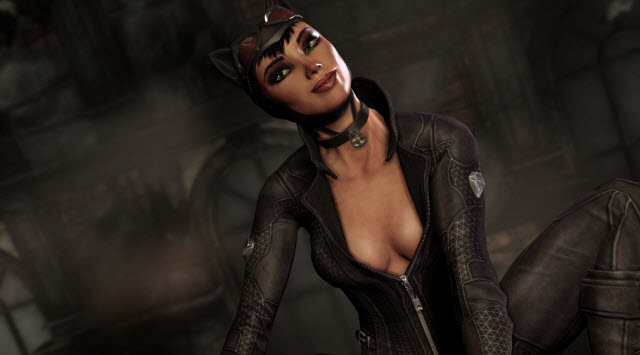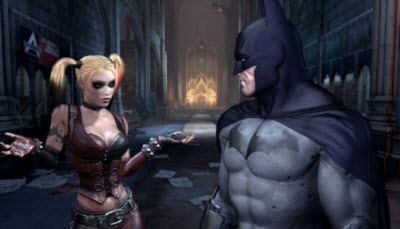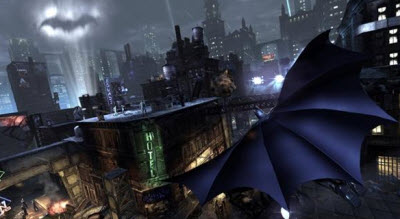
Editor’s note: This review contains minor spoilers.
For a game that was officially announced shortly after the release of its award-winning predecessor, Batman: Arkham City has turned out to be a phenomenal accomplishment for all involved. Game developer Rocksteady Studios has unequivocally delivered the greatest Batman game of all-time, and arguably the greatest comic book-inspired game as well, a notch they’ve had on their belt once before.But honestly that’s not nearly as prestigious an achievement as it should be. With as far as the medium has come, Batman: Arkham City should be par for the course, not the exception to the rule. So while it is a great game, and it outright shames what every other studio is doing with their superhero licenses, it is not quite perfect either.
Batman: Arkham City is one of the candidates for blockbuster status in a very crowded fall selling season for the video game industry, and that’s very important for its publisher, Warner Bros. Interactive Entertainment, which is trying to build the same reputation in games as it has for movies.
Picking up a year after the events of the predecessor game Batman: Arkham Asylum, former warden Quincy Sharpe has taken the credit for stopping The Joker. Sharpe uses that as a springboard to become mayor of Gotham City. He selects a large section of the Gotham slums and converts them into the titular detention city, now housing prisoners from both Arkham Asylum and Blackgate Penitentiary. If that seems like a ludicrous concept, it quite bluntly is, and part of Batman: Arkham City’s writing addresses that without ever truly justifying it. Hugo Strange, a prestigious psychiatrist, is put in charge of Arkham City, and arrests Bruce Wayne during a public appearance at a rally against the existence of the open-air prison. That is how Batman ends up in Arkham City, and so the drama and mystery begins to unfold.
 Batman: Arkham City was penned by Paul Dini, best known for his work on Batman: The Animated Series, Batman: Arkham Asylum, and perhaps most importantly of all, the creation of Harley Quinn. He is no stranger to presenting the Dark Knight’s story in the darkest and most believable way this side of Christopher Nolan, but there’s something not quite right with Batman: Arkham City. The first major dialogue sequence of the game involves Two-Face and Catwoman. In it, they exchange cheesy one-liners, but the climax comes when Catwoman teases, “Aw, no gun, Harv?” to which Two-Face replies, “Two guns, bitch!” It’s almost laughable, and I have to believe that this became a sort of “I’m the Juggernaut, bitch!”-esque inside joke at Rocksteady that they simply forgot to change before releasing to the public. Still, it leaves a bitter first impression that is hard to shrug off for the remainder of the game.
Batman: Arkham City was penned by Paul Dini, best known for his work on Batman: The Animated Series, Batman: Arkham Asylum, and perhaps most importantly of all, the creation of Harley Quinn. He is no stranger to presenting the Dark Knight’s story in the darkest and most believable way this side of Christopher Nolan, but there’s something not quite right with Batman: Arkham City. The first major dialogue sequence of the game involves Two-Face and Catwoman. In it, they exchange cheesy one-liners, but the climax comes when Catwoman teases, “Aw, no gun, Harv?” to which Two-Face replies, “Two guns, bitch!” It’s almost laughable, and I have to believe that this became a sort of “I’m the Juggernaut, bitch!”-esque inside joke at Rocksteady that they simply forgot to change before releasing to the public. Still, it leaves a bitter first impression that is hard to shrug off for the remainder of the game.
Kevin Conroy and Mark Hamill, reprising their roles at Batman and Joker, respectively, do mostly excellent voice-acting jobs, but other characters are hit and miss, and the shoddy story does nothing to help. Other games have certainly done it far worse, but it’s also not the 10/10 material that game review aggregator Metacritic (where the average score is 96 out of 100) would imply it is, either. Certain key moments lack the impact they should have, like when Batman tells a character they shouldn’t have murdered someone with all of the sincerity and conviction as Anakin Skywalker standing over a headless Count Dooku in Revenge of the Sith. This is especially true during the seemingly undercooked final act, which, while not completely terrible, is still head-scratching on multiple levels. It’s hard to know who to blame at times: the actors? The writer? The developers? A certain quantity of camp is expected, but it’s not just that. Batman: Arkham City flat-out does not make sense, occasionally, and it is made even more obvious when the game is generally so good otherwise.
To Rocksteady’s credit, I do appreciate that Batman: Arkham City was planned all along, rather than catapulted into development after the success of the first game. If, like myself, you were left wondering how Joker would ever realistically recover from mutating into a massive TITAN-infected beasty, Rocksteady has done the unthinkable and carried that story thread forward in Batman: Arkham City in a very meaningful way. It is not only nice to have that progression present across both games, but think about it for a minute: How often is some outlandish idea introduced in any form of entertainment, only to be completely ignored after it has served its purpose? It can be attributed to laziness or usually a lack of the talent necessary to intelligently explain the aftermath, but regardless, it happens a lot.
Technical difficulties
Walking into a game as technically ambitious as this, one must brace themselves for at least some level of defect, especially in the era of “ship now, fix later… maybe.” Another ambitious game, Dead Rising 2, had two chances to keep from being a jumbled mess and failed miserably both times, while other games like Grand Theft Auto actually turned some of its technical anarchy into features, albeit unwittingly. Unfortunately, Batman: Arkham City slammed me with a game-crashing bug before I ever even saw the main menu. As is being reported by a slew of other gamers, installing the game on your hard drive can cause severe issues, especially if you did so before updating with the first patch. Of course, the game is new, so figuring this out took several reboots of my console. You may be wondering why I’m detailing this issue right away, rather than towards the end of the review, but since it was the first experience I had with Batman: Arkham City, it’s the first thing I’m writing about. Also, don’t download anything (like Bejeweled 3, for example) while playing Arkham City, otherwise you will be immediately kicked back to the main menu as the game detects that “new downloadable content” is available. A large number of players are reporting issues with downloadable content (DLC) codes, as well as duplicate Catwomen and the like, though I did not personally experience these.
 Beyond that, the only in-game “glitch” I experienced was getting stuck in a wall once, and to be fair I was gliding around like an idiot. Batman: Arkham City is surprisingly sound, and an absolute technical marvel in many regards. What Rocksteady has achieved with their drastically enhanced Unreal 3 engine genuinely reveals the brilliance of the Arkham engineers, all of whom have hopefully been given a very large raise. No longer confined within asylum walls, Batman is free to explore Arkham City using his iconic cape and grapple gun, plus his newly found, limited free-running skills (though they thankfully do not play as big a role as the prologue would lead you to believe).
Beyond that, the only in-game “glitch” I experienced was getting stuck in a wall once, and to be fair I was gliding around like an idiot. Batman: Arkham City is surprisingly sound, and an absolute technical marvel in many regards. What Rocksteady has achieved with their drastically enhanced Unreal 3 engine genuinely reveals the brilliance of the Arkham engineers, all of whom have hopefully been given a very large raise. No longer confined within asylum walls, Batman is free to explore Arkham City using his iconic cape and grapple gun, plus his newly found, limited free-running skills (though they thankfully do not play as big a role as the prologue would lead you to believe).
Learning to glide with Batman is relatively painless, though mastering the nuances of flight requires a bit of skill and practice. There are eight augmented reality side missions to put your gliding and dive-bombing abilities to the test, and doing the first four will even reward you with a Grapnel Boost, allowing Batman to gain extra glide with his grapple gun. Eventually, you could glide and dive your way from one end of Arkham City to another, should you be so inclined. And although initially daunting, you’ll soon learn that the game world is not all that large. At least, not the outer areas. You’ll be heading inside and deep below the streets for every major mission. Seamlessly moving from an underground lair that you’ve just spent an hour exploring sans loading times back to the streets of Arkham City is where you realize just how impressive the tech truly is. At the same time, you’ll be doubling back to revisit many of these areas throughout the game. It’s not horribly blatant or recycled, but it’s definitely noticeable nonetheless. There is a misleading sense of scope at work here.
